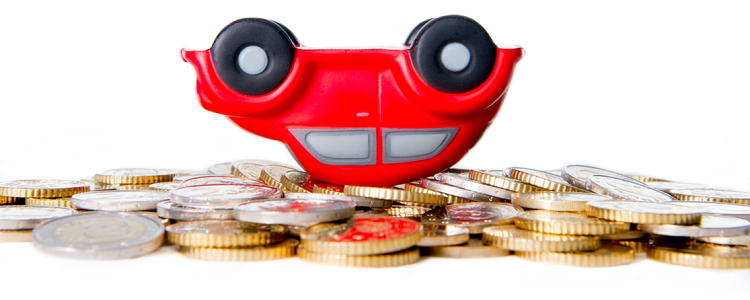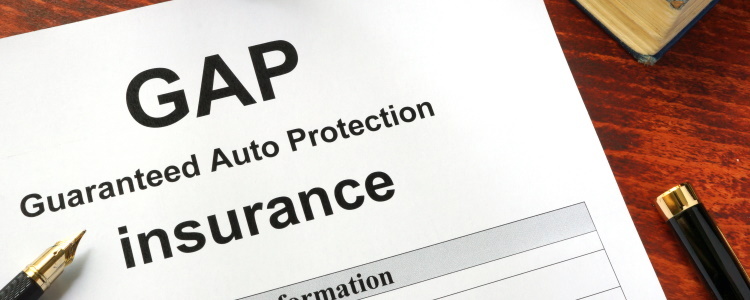Cars depreciate in value, that's not a secret. Also, in recent years, consumers have been dealing with the rising cost of vehicles by extending their loan term to lower their monthly payment. Together, these two issues increase the chance of a borrower having negative equity in a car. Negative equity can lead to other problems but, luckily, it can be avoided - or reduced - with a down payment.
Negative Equity in a Car

When you owe more money on a car loan than the vehicle, itself, is worth, it's known as having negative equity. It is sometimes referred to as being "upside down" or "underwater", as well.
It also seems to be an issue that is all too common these days. According to Edmunds.com, owners were upside down on 30 percent of car sales involving a trade-in in 2015. This is likely due to the rising cost of new cars.
As a result, more consumers are looking for a way to lower their monthly payment and are extending the term of a car loan to make buying a new vehicle more affordable. However, this also increases the likelihood that a borrower will be underwater in the car loan longer due to depreciation.
Cars depreciate in value over time. New cars can lose 20 percent of their original value in the first year, and around 50 percent after three years. At the same time, a longer loan term results in higher interest charges.
Let's use a $20,000 car loan with a 10 percent interest rate as an example:
If you financed with a 36-month term, you'd be paying off around 2.5 percent of the principal each month. If your new car loses 20 percent of its value in the first year, you could recover that amount in just over eight months. From there on out, you should be able to maintain an equity position.
However, if you were to finance the same vehicle with a 60-month term, you would be knocking off less than 1.5 percent of the principal each month. It would take you about 15 months to cover a 20 percent depreciation spread. That, of course, is longer than a year, and by this time the car would be three months into its second year of depreciation. At this point, you would not have caught up with your vehicle's downward spiral of depreciation, and would be facing a negative equity situation for much longer period of time.
The Problem with Negative Equity
When you are upside down for a long period of time, a lot of problems can come up. A longer loan is a longer commitment, and things can change rapidly. You may find yourself stuck with a car you don't want or that doesn't suit your needs. Or worse: one that you can no longer afford.
Negative equity is also an issue when trying to sell or trade in a vehicle. This is because the loan balance is higher than the car's value. So, if you try to sell or trade it in, you are still responsible for the difference in value.
In this case, you will either have to pay the difference out of pocket, or roll the negative equity into a new loan. Basically, this means you are financing - and paying the interest on - two cars at the same time.
In addition, if the vehicle is totaled, stolen or declared a total loss, your insurance will only cover the car's value and not what you owe on it. If you are upside down, you will be responsible for the remaining loan balance - unless, that is, you have GAP insurance.
All of these issues make avoiding negative equity, or reducing the amount of time a borrower is underwater, very important. And the best way to prevent this happening is to have a down payment - the larger, the better.
A Down Payment Can Help You Avoid Negative Equity
You can quickly eliminate the problems related to negative equity with a large down payment. A down payment of 20 percent of the vehicle's value will greatly reduce your chances of either never having negative equity in a vehicle or, if it does happen, significantly reduce the window of time you do have it.
A down payment can also offer borrowers the option of reducing the loan term. This will not only lower the overall cost of interest, but also reduce the exposure to negative equity.
As we said earlier, when it comes to down payments, the bigger the better. You should also know that down payments can be in the form of cash, trade-in equity, or even a combination of the two.
What to Do When You Have Bad Credit
If you have bad credit, it can make finding an auto loan approval more challenging. However, you should know that a down payment can help your approval chances. Sometimes, even a small one can help.
Here's a final tip: Auto Credit Express can help you locate a dealership in your area that can help. We have a nationwide network of dealers that specialize in helping people in unique credit situations.
We can help you next if you simply complete our easy online application. Applying is free and it puts you under no obligation, so you have nothing to lose. Start today!
















